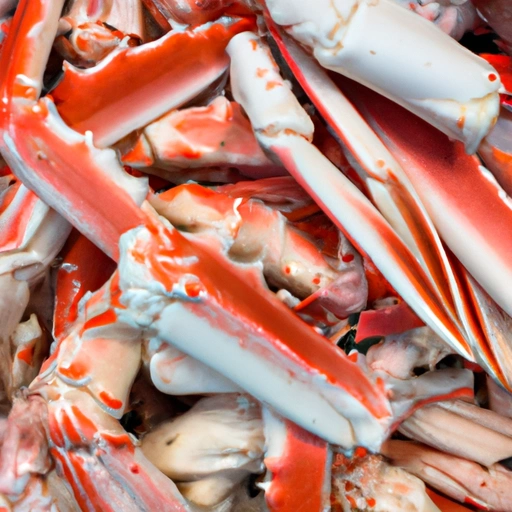Crab
Description

Crab is a highly sought-after shellfish revered for its sweet, delicate flavor and succulent meat. Extracted from the exoskeletons of various species, crab meat is a staple ingredient in cuisines across the globe. From the Dungeness and Blue crabs favored in American recipes to the Brown and Spider crabs prevalent in European dishes, and the prized King and Snow crabs in Asian delicacies, crab plays a vital role in many culinary traditions.
Common uses
Crab is commonly used in a wide range of dishes, from appetizers like crab cakes and crab dips to hearty main courses such as crab boils, bisques, and pasta dishes. It's also a popular ingredient in sushi rolls and can be served chilled in salads or as a decadent crab cocktail.
Nutritional value
Calories
Crab is a low-calorie food, with a 3-ounce (85g) serving containing roughly 80-100 calories, depending on the type of crab.
Protein
Crab is an excellent source of high-quality protein, providing about 16-20 grams of protein per 3-ounce (85g) serving.
Fat
Crab meat is low in fat, with a 3-ounce (85g) serving containing less than 2 grams of fat, most of which is unsaturated and beneficial for heart health.
Carbohydrates
Crab is carbohydrate-free, making it an ideal choice for low-carb diets.
Vitamins
Crab is a good source of vitamins, particularly B vitamins like B12, essential for the nervous system and metabolic processes.
Minerals
It is rich in minerals such as zinc and selenium, which are important for immune function and thyroid health, respectively. A 3-ounce (85g) serving can provide a substantial amount of the daily recommended intake of these minerals.
Health benefits
Crab meat is known for its health benefits, including promoting heart health due to its omega-3 fatty acids, aiding in weight management because of its low-calorie count and high protein content, and supporting immune function with its array of vitamins and minerals.
Potential risks
Though crab is nutritious, it can pose potential risks such as allergic reactions in some individuals, and it may contain contaminants like mercury or bacteria if not properly handled and cooked. Additionally, those watching their sodium intake should consume crab in moderation as it can be high in salt, especially in processed forms.
Common recipes
Popular crab recipes include Maryland crab cakes, California sushi rolls with crab filling, Spanish crab tapas, and Italian crab pasta.
Cooking methods
Crab can be steamed, boiled, sautéed, baked, or grilled. It's crucial to cook crab thoroughly to ensure food safety.
Pairing with other ingredients
Crab pairs well with a variety of flavors, from the tang of citrus to the creaminess of butter and the heat of spices. It can also be complemented by fresh herbs like parsley and dill.
Summary
Crab is a globally cherished seafood ingredient, known for its sweet taste and tender texture. It is versatile in culinary applications and offers significant health benefits due to its high protein content and wealth of nutrients. While mindful of potential risks, incorporating crab into dishes can elevate the flavor and nutritional profile of meals across various cuisines.